The 30 Best Places to Live in New Mexico: Top Communities and Neighborhoods

New Mexico offers residents a distinctive combination of cultural richness, natural beauty, and affordable living that attracts newcomers from across the country.
The state features diverse landscapes ranging from high desert terrain to mountain communities, along with a unique blend of Native American, Hispanic, and Anglo influences that shape daily life.
This comprehensive guide examines thirty communities throughout New Mexico, evaluating factors such as cost of living, employment opportunities, schools, and local amenities to help potential residents make informed decisions.
The analysis covers major metropolitan areas, small mountain towns, and everything in between to provide options for various lifestyles and preferences.
Each location offers distinct advantages, from vibrant arts scenes and outdoor recreation to growing job markets and family-friendly neighborhoods.
Here are the 30 best places to live in New Mexico:
30. Bernalillo
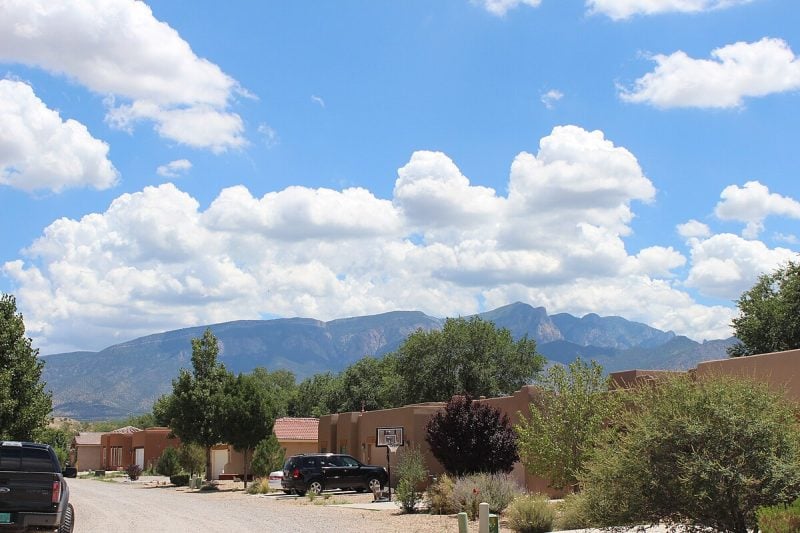
Bernalillo sits in central New Mexico’s Bernalillo County, offering residents a small-town atmosphere within reach of Albuquerque’s amenities. The town enjoys New Mexico’s characteristic high-desert climate with four distinct seasons and abundant sunshine year-round.
Home prices in Bernalillo exceed the state average of $199,923, reflecting the area’s desirability. The community benefits from its location near the state’s largest metropolitan area while maintaining its own distinct character.
The town attracts residents seeking a quieter lifestyle without sacrificing access to urban conveniences. Bernalillo’s proximity to Albuquerque provides employment opportunities and cultural attractions while allowing residents to enjoy a more relaxed pace of life.
The area’s diverse population includes Hispanic, Native American, and Anglo residents, creating a rich cultural environment. Local amenities and community features contribute to Bernalillo’s appeal as a residential destination in central New Mexico.
29. Mountainair
Mountainair sits in Torrance County with a population of approximately 950 to 1,000 residents. This small town offers a quiet, slower-paced lifestyle in eastern New Mexico.
The community is located in the Sacramento Mountains, providing scenic landscapes and outdoor recreation opportunities. Residents can enjoy fishing, hiking, and wildlife viewing in the surrounding area.
Home prices in Mountainair are significantly lower than New Mexico’s state average of $199,923. This affordability makes it attractive for buyers seeking budget-friendly real estate options.
The town has received positive livability ratings from various ranking services. Its small size creates a tight-knit community atmosphere where neighbors know each other.
Mountainair’s rich cultural history adds character to the area. The mountain setting provides a dramatic backdrop for daily life while maintaining easy access to essential services and amenities.
28. Lordsburg
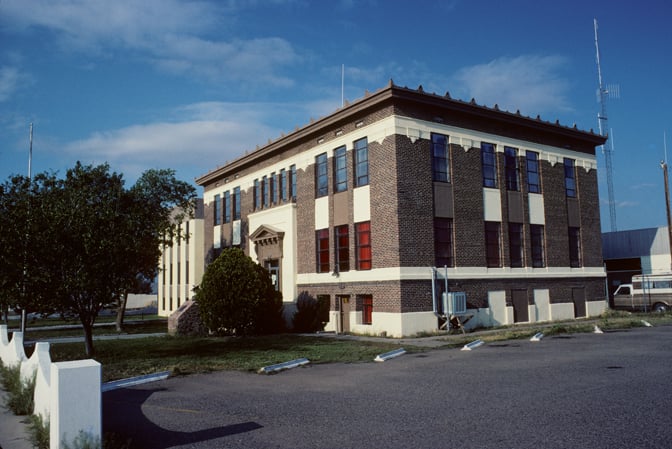
Lordsburg sits in southwestern New Mexico with a population of approximately 2,081 residents. The small town offers one of the most affordable housing markets in the state.
Home prices average around $67,600 to $72,460, making it significantly more affordable than New Mexico’s state average. This represents about 43% lower costs compared to typical state housing values.
The town experiences a desert climate with hot, dry conditions throughout much of the year. Lordsburg provides access to natural desert landscapes and mountain views in the surrounding area.
The cost of living remains notably low, attracting residents seeking budget-friendly housing options. The community maintains a population density of about 103 people per square mile.
Lordsburg serves as a small, quiet community for those preferring rural desert living. The town’s location in Hidalgo County provides a peaceful environment away from urban centers.
27. Tucumcari
Tucumcari sits in Quay County with a population of approximately 5,200 residents. This small city offers one of the lowest costs of living in New Mexico, ranking 6th out of 104 places statewide for affordability.
Housing costs remain significantly below the state average of $199,923. The city ranked 10th for most affordable housing in New Mexico according to the National Council for Home Safety and Security.
Tucumcari features parks and green spaces for outdoor activities. The city experiences short summers and cold winters typical of the region.
The median household income is $26,029, well below the national average. The poverty rate stands at 26.2%, which exceeds both state and national levels.
Public schools in Tucumcari rank 17th out of 96 places in New Mexico. The small-town atmosphere appeals to residents seeking affordable living in a quiet community setting.
26. Las Vegas
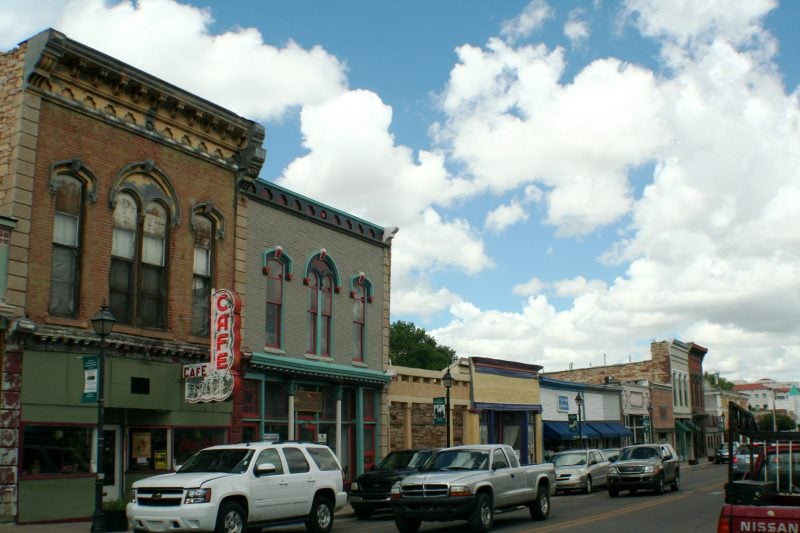
Las Vegas, New Mexico, is a small city in San Miguel County with a population of 13,120. The city offers residents a sparse suburban feel where most people own their homes.
Home prices in Las Vegas are below the state average of $199,923, making it an affordable option. The city ranks as one of the most livable places in New Mexico according to BestPlaces rankings.
Las Vegas receives high marks for weather and safety conditions. These factors contribute significantly to its overall livability rating.
The city attracts many retirees and residents tend to lean liberal politically. Its small-town charm combines with cultural attractions to appeal to those seeking Southwest living.
Las Vegas offers affordability and a quieter lifestyle compared to larger New Mexico cities. The community provides a mix of benefits for those considering relocation to the area.
25. Roswell
Roswell ranks among New Mexico’s most affordable places to live. Home prices fall below the state average of $199,923, making it attractive for budget-conscious residents.
The city offers a unique blend of history and small-town charm. Located in Chaves County in eastern New Mexico, Roswell attracts visitors worldwide due to its famous UFO incident connection.
Residents enjoy access to museums, scenic parks, and outdoor activities. The city maintains an eclectic atmosphere with cultural attractions and historical sites.
Roswell ranks 30th out of 104 places for lowest cost of living in New Mexico. It also places 33rd out of 104 for diversity among the state’s communities.
The city provides small-town living with reasonable housing costs and established amenities.
24. Belen
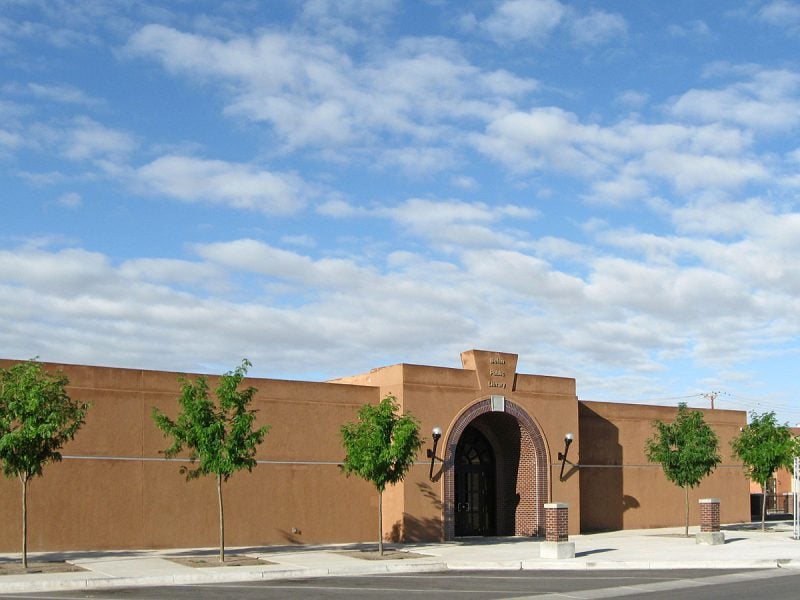
Belen is a small city in central New Mexico with a population of approximately 7,500 residents. The community sits along the Rio Grande and maintains strong historical ties to the railroad industry.
Housing costs in Belen remain below the state average. Home prices offer affordability compared to larger New Mexico cities like Albuquerque and Santa Fe.
The city faces economic challenges with a poverty rate of 23.3%. The median household income of $35,448 falls significantly below the national average.
Belen provides a quieter lifestyle away from urban congestion. Residents have access to outdoor recreation along the Rio Grande corridor and nearby bosque areas.
The community maintains a small-town atmosphere with local businesses and cultural events. Transportation access includes proximity to major highways connecting to Albuquerque and other regional centers.
23. Edgewood
Edgewood sits in Santa Fe County with a population of 6,122 residents. The town offers a suburban rural mix that appeals to families and retirees seeking quieter living.
Located east of Albuquerque, Edgewood provides convenient access to urban amenities while maintaining small-town charm. The University of New Mexico brings educational opportunities to the area.
The community reflects strong Native American and Hispanic cultural heritage. This blend creates a unique atmosphere that distinguishes Edgewood from other New Mexico towns.
Most residents own their homes in this conservative-leaning community. Home prices align closely with New Mexico’s state average of $199,923.
Edgewood ranks as the 6th best suburb to live in New Mexico. The town also places 4th among the state’s best suburbs for young professionals.
Public schools perform above average compared to state standards. The area offers abundant outdoor recreation opportunities in nearby mountain regions.
22. Santa Rosa
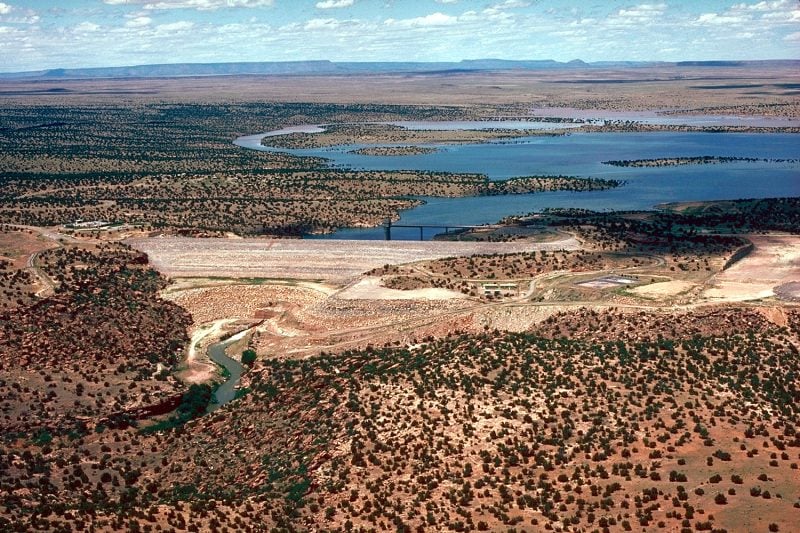
Santa Rosa sits in the heart of New Mexico along the route between Amarillo and Albuquerque. This small town has earned recognition as “The Scuba Diving Capital of the Southwest.”
The famous Blue Hole serves as the town’s main attraction. This natural artesian spring extends 81 feet deep and draws divers from across the region.
Santa Rosa maintains a population of approximately 2,450 residents with a median household income of $41,995. The community offers a friendly, welcoming atmosphere typical of small New Mexico towns.
The local economy relies on truck stops, tourism, and a state prison facility. Natural lakes and interesting topography surround the area, providing scenic beauty.
Park Lake and El Rito Creek offer additional recreational opportunities for residents and visitors. The town provides essential amenities while maintaining its small-town character.
21. Gallup
Gallup sits in southwestern New Mexico near the Arizona border with a population of approximately 21,600 residents. The city holds deep cultural significance as home to Navajo, Zuni, and Hopi communities for centuries.
Housing costs in Gallup remain affordable compared to New Mexico’s average. Home prices are significantly lower than the state median of $199,923.
The city receives a livability score of 68-69 from major ranking services. This places Gallup at #21 among New Mexico cities for overall livability.
Gallup’s median household income is $45,754, which falls below the national average. The poverty rate stands at 33.7%, higher than national levels.
The area offers scenic high desert landscapes typical of the Four Corners region. Gallup serves as a gateway to nearby Native American cultural sites and natural attractions.
The city combines affordable living costs with access to Southwestern culture and outdoor recreation opportunities.
20. Portales

Portales sits in Roosevelt County as a small town known for its mild climate and friendly community atmosphere. The city hosts two universities, creating an educational environment that attracts families and students.
Home prices in Portales remain below New Mexico’s state average of $199,923, making it an affordable option for residents. The cost of living stays reasonable compared to larger cities throughout the state.
The town ranks 11th out of 96 places for best public schools in New Mexico. This strong educational system makes Portales attractive to families with school-age children.
Local amenities include various shopping centers, restaurants, and entertainment venues. Recreational activities center around the Portales Municipal facilities and outdoor spaces.
The community maintains a vibrant culture despite its small size. Roosevelt County’s location provides access to both rural and urban amenities within reasonable driving distances.
19. Clovis
Clovis offers residents a small-town atmosphere near the Texas border in eastern New Mexico. The city originally developed as a railroad town and maintains strong transportation connections today.
Home prices in Clovis remain below the state average, making it an affordable option for families. The sparse suburban environment appeals to those seeking space and homeownership opportunities.
The community supports both families and young professionals with numerous parks and recreational areas. Public schools perform above average compared to other New Mexico districts.
Clovis serves as a regional center for agriculture and food processing, including cheddar cheese production. These industries provide stable employment opportunities for residents.
The city ranks among the top places to live in New Mexico based on cost of living and housing affordability. Most residents own their homes and enjoy the conservative-leaning community atmosphere.
18. Hobbs

Hobbs sits in southeastern New Mexico with a population of 38,475 residents. The city ranks second out of 23 cities in Lea County based on economic health and cost of living factors.
The local economy centers around the oil and gas industry. This provides employment opportunities but also creates economic fluctuations tied to energy markets.
Housing costs remain affordable compared to state averages. Home prices in Hobbs fall below New Mexico’s average of $199,923, making homeownership more accessible.
The typical household earns $57,646 annually, which is below the national median of $67,500. The poverty rate stands at 19.1%, higher than national averages.
Hobbs offers a slower pace of life with a welcoming community atmosphere. The desert landscape provides a distinctive southwestern setting for residents.
The city maintains lower crime rates compared to many urban areas. This contributes to a sense of safety for families and individuals considering relocation.
17. Deming
Deming is a town in Luna County with a population of approximately 14,700 residents. The community sits northwest of Las Cruces in New Mexico’s desert landscape.
Housing costs in Deming remain well below the state average of $199,923. Most residents own their homes, creating a stable neighborhood environment.
The town attracts both families and retirees seeking affordable living options. Residents tend to have liberal political leanings according to demographic data.
Recreational activities include golf at Deming Municipal Golf Course and outdoor exploration at nearby Rockhound State Park. Luna Rossa Winery offers relaxation among desert vineyards.
The median household income is $28,463, significantly lower than the national median. The poverty rate stands at 26.8%, which exceeds national averages by a substantial margin.
Deming provides a sparse suburban atmosphere for those prioritizing affordability over urban amenities.
16. Carlsbad

Carlsbad sits in southeastern New Mexico and offers residents a low cost of living compared to the state average. The city maintains a strong job market with good employment opportunities.
Home prices in Carlsbad remain below New Mexico’s average of $199,923. This makes homeownership more accessible for families and first-time buyers.
The city is famous for Carlsbad Caverns National Park, which features over 100 limestone caves. These natural attractions draw visitors from around the world and contribute to the local economy.
Carlsbad’s landscape includes limestone cliffs, desert terrain, and cacti formations. The area provides outdoor recreation opportunities for nature enthusiasts.
The city ranks well in quality of life measurements according to various rating systems. Carlsbad combines affordable living with natural beauty and economic stability for its residents.
15. Grants
Grants sits in northwestern New Mexico with a population of approximately 9,800 residents. The small city offers a peaceful atmosphere for those seeking a quiet lifestyle away from urban crowds.
The area has deep historical roots in Native American culture and Spanish exploration. This diverse heritage creates unique local traditions and cultural experiences throughout the community.
Housing remains highly affordable with a median home price of $124,200. The local housing market has shown strong growth with home appreciation up 13.8% over the past year.
The historic downtown district features local shops, restaurants, galleries and cafes. Residents enjoy access to outdoor recreation opportunities in the surrounding Cibola National Forest.
Grants provides mountain views and easy access to camping, fishing, hiking and biking trails. The location appeals to families and individuals who prefer small-town living in a natural setting.
14. Truth or Consequences
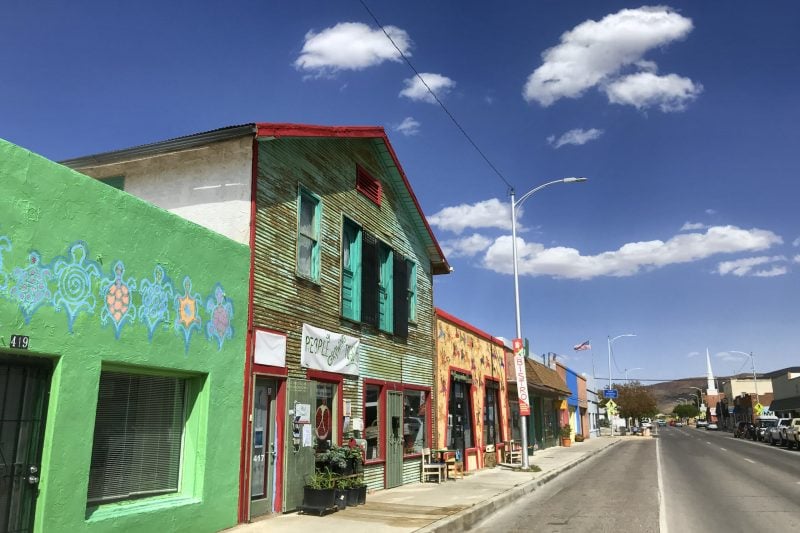
Truth or Consequences sits in Sierra County between the Rio Grande and Elephant Butte Lake State Park. This small city houses approximately 6,000 residents in a laid-back desert community.
The town offers natural hot springs that attract visitors seeking relaxation and wellness. Elephant Butte Lake provides boating, fishing, and water recreation opportunities year-round.
Outdoor enthusiasts benefit from proximity to the Gila National Forest. The area supports hiking, camping, and wildlife viewing in diverse southwestern landscapes.
The cost of living ranks favorably compared to most US cities. Housing and daily expenses remain affordable for residents on various income levels.
The median household income is $28,250, which sits below national averages. The poverty rate reaches 30.3%, significantly higher than the national standard.
The community maintains a quiet, rural atmosphere that appeals to retirees and those seeking slower-paced living.
13. Ruidoso
Ruidoso offers residents a suburban rural lifestyle in the mountains of Lincoln County. The town has a population of approximately 7,700 people and attracts many retirees seeking a peaceful mountain community.
The local economy centers on tourism while maintaining residential charm. Visitors and residents enjoy nearby mountain ranges, skiing resorts, and extensive hiking trails throughout the area.
Home prices in Ruidoso align closely with New Mexico’s state average of around $199,923. Most residents own their homes rather than rent in this mountain community.
The town features numerous restaurants, coffee shops, and parks for residents to enjoy. Public schools in Ruidoso perform above average compared to state standards.
Ruidoso ranked third among the top 10 best places to live in New Mexico according to recent studies. The area combines outdoor recreation opportunities with small-town living in a scenic mountain setting.
12. Farmington
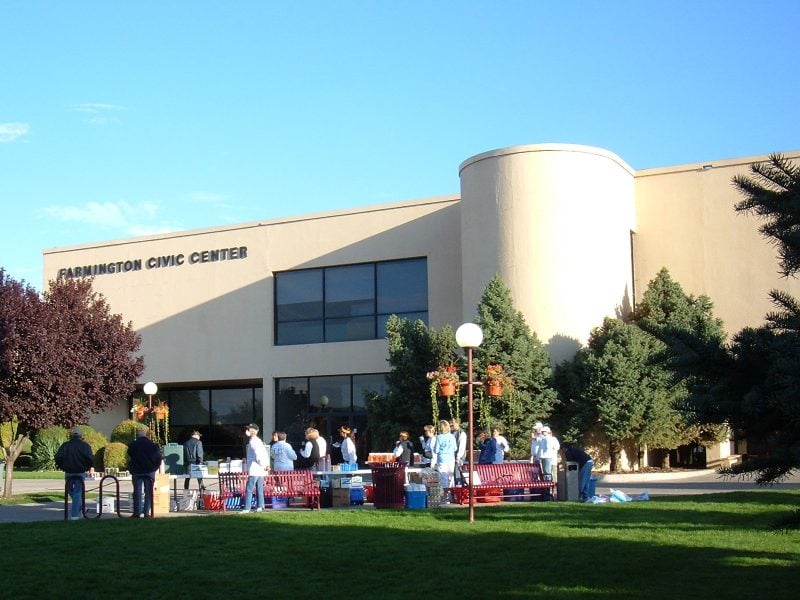
Farmington ranks as the largest city in the Four Corners region with approximately 46,000 residents. The city offers a sparse suburban feel where most residents own their homes.
Housing affordability stands out as a major advantage. The cost of living receives high ratings, making it accessible for families and young professionals.
The local economy maintains strength with a healthy job market and low unemployment rates. This economic stability attracts residents seeking career opportunities.
Several neighborhoods offer distinct advantages. Foothills Drive Area features beautiful landscape views and newer construction. Hood Mesa Trail provides spacious lots with custom homes.
Northeast Farmington combines established neighborhoods with newer developments. Sunrise Parkway appeals to families with its proximity to parks and family-friendly atmosphere.
The public school system performs above average standards. Farmington also maintains a vibrant arts scene with various entertainment options for residents.
11. Espanola
Española sits in north-central New Mexico, offering residents a blend of cultural heritage and natural beauty. The city has a livability score of 71 out of 100 and ranks 12th among New Mexico communities.
Home prices in Española align closely with the state average of $199,923. This makes the area accessible for various income levels and family sizes.
The city serves single professionals, growing families, and retirees with diverse neighborhood options. Los Alamos stands out as one of the most desirable residential areas in the region.
Española’s location provides access to outdoor recreation and scenic landscapes. The community maintains strong cultural traditions rooted in New Mexico’s diverse heritage.
Crime data, employment opportunities, and health services factor into the city’s overall appeal for potential residents.
10. Silver City
Silver City sits in southwestern New Mexico with a population of approximately 9,574 residents. The town offers a suburban rural mix in Grant County.
Home prices in Silver City remain below the state average of $199,923. Most residents own their homes rather than rent.
The community attracts young professionals and retirees seeking a slower pace of life. Residents tend to hold moderate political views.
Silver City provides access to multiple biking and jogging trails. The nearby Gila National Forest offers scenic mountain views and wilderness areas.
The town features a local arts scene and historic sites like Fort Bayard. Public schools in Silver City perform above average compared to other New Mexico districts.
The mountainous landscape creates an appealing setting for outdoor enthusiasts. Silver City maintains small-town charm while providing essential amenities and services.
9. Los Ranchos de Albuquerque
Los Ranchos de Albuquerque stands out as one of New Mexico’s premier residential communities. This small village sits in the foothills of the Sandia Mountains, offering residents scenic beauty and rural charm.
The community maintains easy access to Albuquerque while preserving its quiet, small-town atmosphere. Residents enjoy diverse outdoor recreational opportunities including hiking, biking, and fishing in the surrounding natural areas.
The village attracts families and professionals seeking a peaceful lifestyle without sacrificing urban conveniences. Los Ranchos de Albuquerque features a friendly, diverse population that values community connections.
Housing options range from traditional adobe homes to modern properties with mountain views. The area experiences mild winters and warm summers typical of the high desert climate.
Los Ranchos de Albuquerque consistently ranks among New Mexico’s best places to live due to its unique combination of rural tranquility and metropolitan accessibility.
8. Alamogordo
Alamogordo sits in the Tularosa Basin of south-central New Mexico with a population of approximately 31,000 residents. The city serves as the county seat of Otero County and offers a suburban-rural lifestyle.
Most residents own their homes in this family-friendly community. The area attracts families seeking affordable housing and a slower pace of life.
Public schools in Alamogordo perform above average compared to state standards. The city maintains a conservative-leaning political climate.
Home prices align closely with New Mexico’s state average of around $200,000. The cost of living remains reasonable compared to larger metropolitan areas.
Alamogordo experiences sunny, mild weather throughout most of the year. This climate supports year-round outdoor activities and recreation.
The downtown area features art galleries, local shops, and restaurants. White Sands National Park lies nearby, providing unique recreational opportunities.
7. Los Alamos
Los Alamos stands out as one of New Mexico’s premier places to live. This small incorporated town sits across four mesas in the Pajarito Plateau region of central northern New Mexico.
The community offers exceptional public schools that rank among the state’s best. Crime rates remain remarkably low, creating a safe environment for families and residents of all ages.
Los Alamos provides abundant outdoor recreation opportunities. The area features more than 120 hiking and biking trails for outdoor enthusiasts. Residents enjoy convenient access to Pajarito Mountain Ski Area for winter sports.
The University of New Mexico-Los Alamos brings a distinctive college-town atmosphere to the area. This academic presence attracts young professionals, families, and retirees seeking an engaging community environment.
The median household income significantly exceeds the national average, reflecting the town’s economic stability and prosperity.
6. Corrales
Corrales ranks among New Mexico’s most desirable places to live. This village of 8,340 residents offers small-town charm combined with natural beauty.
The community was officially incorporated in 1971. CNN recognized Corrales as the 19th-best place to live in 2007.
Residents enjoy open spaces and minimal traffic throughout the village. The proximity to Sandia Mountain provides stunning natural views for daily life.
Home prices in Corrales exceed the state average of $199,923. The higher costs reflect the area’s desirability and quality of life.
The village maintains its historic character with preserved buildings. Native American and Hispanic heritage create a unique cultural atmosphere.
Corrales provides easy access to University of New Mexico and downtown Albuquerque. Mountain areas and archaeological sites lie within a day’s drive for weekend exploration.
5. Taos
Taos stands as one of northern New Mexico’s most distinctive communities. The town sits near the Rocky Mountains with a population of approximately 5,950 residents.
The area offers stunning mountain views and deep forests. Snow-capped peaks provide a dramatic backdrop for daily life.
Taos maintains a vibrant arts scene with numerous galleries and museums. The community values creativity and cultural diversity.
Outdoor enthusiasts find excellent skiing, hiking, and mountain biking opportunities nearby. The natural landscape provides year-round recreational activities.
The cost of living presents challenges for some residents. Home prices exceed the state average of $199,923 significantly.
The median household income is $30,709, below the national average. The poverty rate reaches 22.4%, which is 60% higher than national levels.
Taos features unique shops, restaurants, and cultural attractions. The town’s rich history and artistic heritage attract visitors and new residents alike.
4. Las Cruces
Las Cruces stands as New Mexico’s second-largest city after Albuquerque. The city sits below the Organ Mountains, offering stunning desert landscapes and mountain views.
This vibrant community blends Native American, Spanish, and Mexican cultures seamlessly. Las Cruces hosts numerous festivals celebrating salsa dancing, music, and food throughout the year.
The downtown farmers market spans seven city blocks. Wine festivals and cultural events draw visitors regularly.
New Mexico State University calls Las Cruces home. The city also houses the world-renowned Chile Pepper Institute.
Top neighborhoods include historic Mesilla with its cultural charm. Sonoma Ranch offers newer developments with golf course communities. Picacho Hills features upscale homes with scenic vistas.
The city provides excellent outdoor recreation opportunities. Dripping Springs Natural Area and Organ Mountains-Desert Peaks National Monument offer hiking and exploration.
Las Cruces combines affordable living with rich cultural attractions. The community welcomes families, professionals, and retirees alike.
3. Rio Rancho
Rio Rancho stands as New Mexico’s fastest-growing city, located 15 miles northwest of Albuquerque in Sandoval County. The city has earned recognition on multiple 2025 “Best Places to Live” lists across the nation.
With a population of over 104,000 residents, Rio Rancho ranks as the state’s third-most populous city. The community benefits from a strong job market and low unemployment rate of 4.1%, well below national averages.
The city offers excellent educational opportunities and consistently ranks among New Mexico’s most diverse suburbs. Rio Rancho also places second statewide for public school quality.
Residents enjoy easy access to outdoor recreation along the Rio Grande River and nearby natural areas. The city’s planned grid layout provides organized neighborhoods with modern amenities.
Rio Rancho’s combination of affordable housing, job growth, and quality public services attracts families and professionals seeking suburban living near Albuquerque’s urban conveniences.
2. Albuquerque
Albuquerque stands as New Mexico’s largest city and economic hub. The metro area combines urban amenities with southwestern culture and stunning desert landscapes.
The city offers diverse neighborhoods to suit different lifestyles. Nob Hill attracts young professionals with its eclectic shops, restaurants, and vibrant arts scene. Rio Rancho provides family-friendly suburban living with affordable housing options.
Residents enjoy access to unique attractions like Petroglyph National Monument and Old Town Albuquerque. The Sandia Peak Tramway offers spectacular sunset views over the Rio Grande Valley.
The area hosts numerous cultural sites including the Indian Pueblo Cultural Center. Outdoor enthusiasts appreciate hiking trails, hot air ballooning, and proximity to the Sandia Mountains.
Home prices exceed the state average but remain reasonable compared to other major southwestern cities. The job market benefits from healthcare, technology, and government sectors.
1. Santa Fe
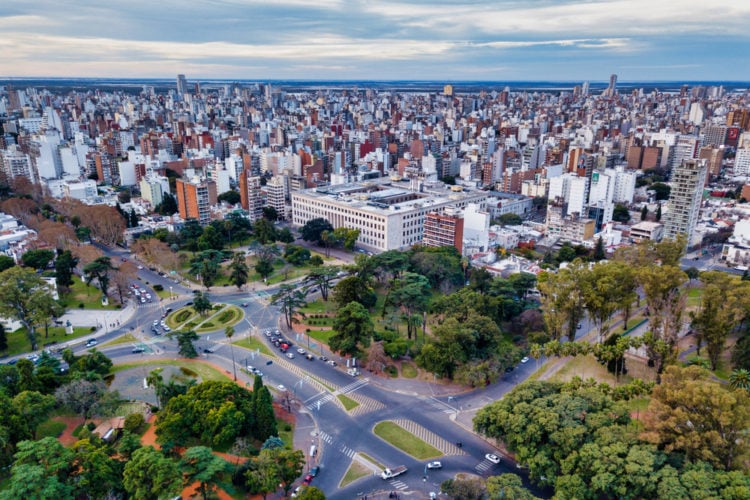
Santa Fe serves as New Mexico’s capital city. The city sits in the foothills of the Sangre de Cristo Mountains in northern New Mexico.
The city attracts artists and history enthusiasts with its distinctive architecture and cultural heritage. Its full Spanish name is La Villa Real de la Santa Fe de San Francisco de Asis.
Santa Fe ranks as the fourth-largest city in New Mexico. The area offers numerous outdoor recreation opportunities with trails and mountain access.
The cost of living runs 14% higher than the national average. Housing demand exceeds supply due to population growth in the region.
Residents enjoy a mix of cultural amenities and outdoor activities. The city provides access to art galleries, museums, and hiking trails throughout the surrounding mountains.
What Makes New Mexico Unique
New Mexico stands apart through its distinctive blend of Native American, Hispanic, and Anglo cultures, dramatic desert and mountain landscapes, and notably affordable living costs compared to neighboring southwestern states.
Cultural Heritage and Diversity
New Mexico’s cultural identity stems from over 400 years of multicultural history. The state hosts 23 Native American tribes, each maintaining distinct traditions, languages, and sovereign governance.
Hispanic heritage runs deep throughout the region. Spanish colonizers arrived in 1598, establishing communities that predate many East Coast settlements. This legacy appears in architecture, place names, and daily life.
Key Cultural Elements:
Traditional adobe architecture in historic districts
Annual feast days and ceremonial dances at pueblos
Bilingual communities where Spanish and English blend naturally
Art markets featuring pottery, jewelry, and textiles
The famous “red or green” chile question reflects the state’s culinary identity. New Mexico chiles grow exclusively in the high desert climate, creating flavors unavailable elsewhere.
Natural Beauty and Outdoor Recreation
The state’s geography spans four distinct life zones, from Chihuahuan Desert lowlands to alpine peaks exceeding 13,000 feet. This diversity creates year-round outdoor opportunities within short driving distances.
Notable Natural Features:
Carlsbad Caverns National Park with underground limestone chambers
White Sands National Park featuring gypsum dune fields
Bandelier National Monument preserving ancestral Puebloan cliff dwellings
Rio Grande corridor supporting diverse wildlife
The high desert climate delivers over 280 sunny days annually. Low humidity levels make summer temperatures more comfortable than in other southwestern regions.
Winter sports thrive in northern mountains, while southern areas remain mild year-round. This climate variation allows residents to choose their preferred seasonal activities.
Cost of Living Factors
New Mexico maintains significantly lower living costs than California, Colorado, or Arizona. Housing prices average 15-30% below national medians in most metropolitan areas.
Economic Advantages:
No tax on Social Security benefits
Low property tax rates statewide
Affordable utilities due to natural gas production
Reduced transportation costs from shorter commute distances
Energy costs stay low thanks to local oil and gas resources. Many communities offer municipal utilities at rates below national averages.
The state’s sparse population density keeps land prices reasonable. Rural properties remain accessible to middle-income buyers seeking space and privacy.
Quality of Life Considerations
New Mexico offers distinct advantages in healthcare access through major medical centers, diverse educational options from rural schools to research universities, and varying safety profiles across different communities. These factors significantly impact daily living experiences and long-term satisfaction for residents.
Healthcare and Wellness Resources
New Mexico’s healthcare landscape centers around several major medical hubs. The University of New Mexico Hospital in Albuquerque serves as the state’s primary academic medical center and trauma facility.
Presbyterian Healthcare Services operates multiple hospitals across the state. Their network includes facilities in Albuquerque, Santa Fe, and rural communities throughout New Mexico.
Rural Healthcare Challenges
Limited specialist availability in remote areas
Longer travel distances to major medical facilities
Fewer urgent care and emergency options
Los Alamos Medical Center provides comprehensive services to northern communities. Santa Fe’s healthcare infrastructure includes Christus St. Vincent Regional Medical Center and several specialty clinics.
The state faces physician shortages in certain specialties. Mental health services remain particularly limited in rural areas, though telehealth options have expanded access.
Educational Opportunities
New Mexico’s educational system includes strong research institutions and diverse K-12 options. The University of New Mexico in Albuquerque ranks as the state’s flagship research university.
New Mexico Institute of Mining and Technology specializes in engineering and sciences. New Mexico State University in Las Cruces offers comprehensive undergraduate and graduate programs.
K-12 Education Highlights
Los Alamos schools consistently rank among the state’s best
Santa Fe provides diverse public and private options
Charter schools offer alternative educational approaches
Rural districts face funding and staffing challenges
The state’s public school system shows significant variation by district. Wealthier communities like Los Alamos and parts of Albuquerque typically offer better resources and outcomes.
Community colleges throughout New Mexico provide vocational training and transfer opportunities. Eastern New Mexico University and Western New Mexico University serve regional populations.
Community and Safety
Crime rates vary dramatically across New Mexico communities. Los Alamos and White Rock maintain some of the lowest crime rates in the state.
Albuquerque faces higher property crime rates compared to national averages. Violent crime concentrates in specific neighborhoods rather than citywide patterns.
Safety Considerations by Area
Low Crime: Los Alamos, White Rock, parts of Santa Fe
Moderate Crime: Las Cruces, Roswell, Farmington
Higher Crime: Certain Albuquerque neighborhoods, Gallup
Rural communities generally experience lower crime rates but may have limited law enforcement response times. Emergency services coverage becomes sparse in remote areas.
Community engagement remains strong in smaller towns. Many areas feature active neighborhood associations and community watch programs that enhance local safety efforts.




